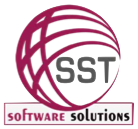Performance Management System
Organizations can prevent or address many performance problems by ensuring effective communication between managers and employees, when everyone within the organization understands their full role in achieving goals and accessing performance indicators related to their work, and how to evaluate each individual’s contribution and develop it through the competent department’s vision of their motives clearly. Therefore, Performance management software is an important tool in achieving the required communication and contributing to the overall success of the organization, and this is achieved through some basic characteristics and features.
Setting integrated goals in one place
The process of setting goals is the setting of performance standards on the basis of which performance is evaluated later, and therefore the evaluation of performance standards depends on identifying some basic types of objectives, such as:
- Objectives related to the job description that continue until the job description changes.
- Objectives related to the project objectives, which end with achieving the goal and ending the project.
- Behavioral objectives that help you achieve different career goals and continue in parallel with them.
- finally, flexible objectives that are difficult to achieve, but help to extend employees’ knowledge and skills and are set according to each employee’s abilities and in the different departments.
The performance management program is characterized by flexibility in assigning appropriate evaluations to all areas of the different departments within the organization, providing various inputs to performance from multiple integrated sources in terms of evaluation elements such as key performance indicators, productivity determinants and departmental goals, behavioral goals and others, and in terms of evaluation categories such as job indicators for each job, with the possibility of adding new criteria for evaluations.
Evaluation accuracy
The SST Performance Management Program helps you conduct evaluations for managers and employees by classifying evaluations by different employee levels, types of evaluation periods, and evaluation objectives; Is it a contract renewal evaluation, training evaluation, employee loyalty evaluation, or general evaluation? With the ability to merge duplicate comments to highlight them and work on developing them.
The software also supports 360 degree or group assessments; It is one of the widely preferred types of evaluations in developing employee performance, by compiling assessments from employee subordinates and department colleagues about the general behavior and performance related to the job.
A lasting development of evaluations
SST supports flexibility in operation and use, as the Performance Management Software supports automatic renewal of assessments based on their timings, and the ability to add new items to the evaluation classifications.
Constructive relationships between company departments
The PMS enables the evaluation of people in different departments in the event that departments communicate in some business, which supports the necessity of developing work performance between departments and not only individuals. Performance management is also integrated with reward management to move evaluations into actions and rewards that ensure the seriousness of evaluations and their impact on improving performance within the organization.
A Clear vision in achieving goals
The Performance Management Program provides a set of integrated tools for analyzing evaluations and reporting for performance evaluation against enterprise-wide goals, and can be shared with the heads to analyze the performance of each department, each section and every employee, and thus make decisions in order to develop work within the organization in proportion to achieving Its goals.

